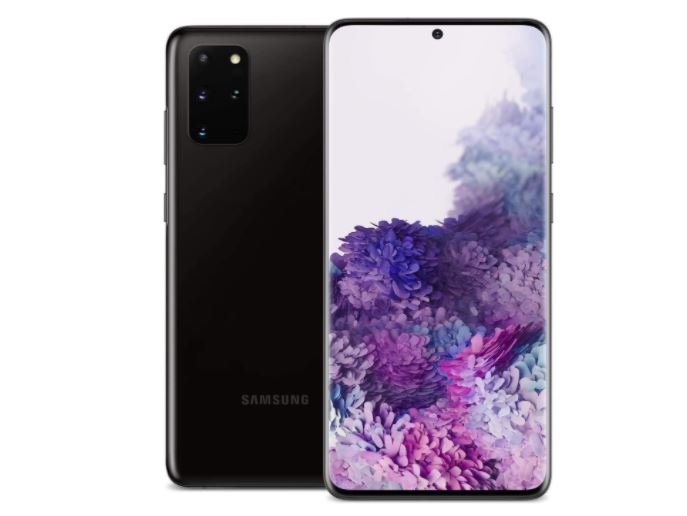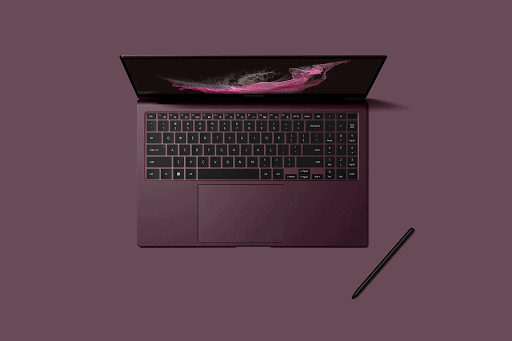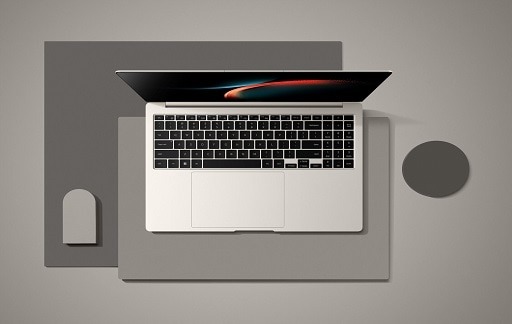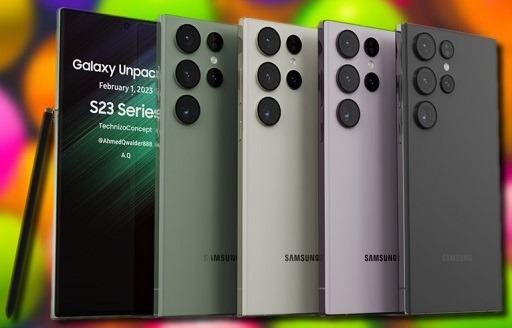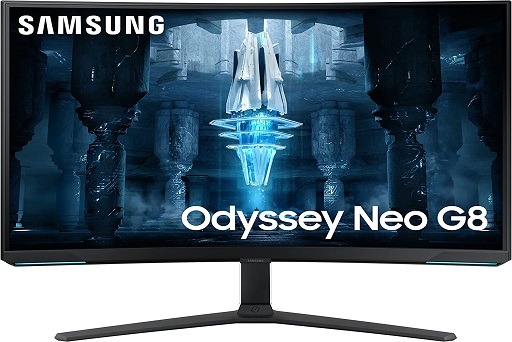It is once again that time of year when Samsung presents its most recent lineup of flagship smartphones to the public. As was to be expected, the Galaxy S23 models released this year are strikingly similar to the S22 models that came before them in their respective categories.
It is interesting to note that this year, changes across the board have been significantly more iterative, which is a positive sign that Samsung’s S-series lineup has reached a certain level of maturity. This year’s flagship smartphones from Samsung will not, for the most part, include any game-changing new features or significant camera upgrades. Rather than rethinking Samsung’s strategy for producing high-end smartphones, the S23 models include a concentration on incremental enhancements to the quality of life, which have the effect of refining rather than changing the strategy.
As was the case in previous years, the Galaxy S23 lineup includes a variety of different models, ranging from the compact Galaxy S23 to the Galaxy S23 Ultra, which is an extremely powerful smartphone. You might be surprised by what the more cost S23 has to offer, despite the fact that it is tempting to go straight for Samsung’s more expensive S23 Ultra.
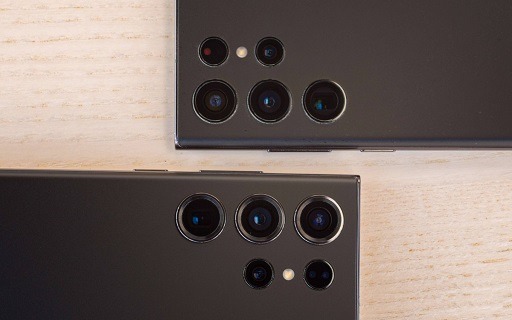
Galaxy S23 vs. Galaxy S23 Ultra: specs
| Samsung Galaxy S23 | Samsung Galaxy S23 Ultra | |
| Size | 146.3 x 70.9 x 7.62 mm (2.79 x 5.76 x 0.3 inches) | 157.7 x 78 x 8.9 mm (3.07 x 6.43 x 0.35 inches) |
| Weight | 168 grams (5.93 ounces) | 234 grams (8.25 ounces) |
| Screen size | 6.1-inch Dynamic AMOLED 2X | 6.8-inch Dynamic AMOLED 2X |
| Screen resolution | FHD+ at 425 pixels per inch | QHD+ at 550 pixels per inch |
| Operating system | Android 13 with One UI 5.1 | Android 13 with One UI 5.1 |
| Storage | 128GB, 256GB | 256GB, 512GB, 1TB |
| MicroSD card slot | No | No |
| Tap-to-pay services | Google Pay, Samsung Pay | Google Pay, Samsung Pay |
| Processor | Snapdragon 8 Gen 2 for Galaxy | Snapdragon 8 Gen 2 for Galaxy |
| RAM | 8GB | 8GB, 12GB |
| Cameras | Rear: 50-megapixel (MP) primary, 12MP ultrawide, and 10MP telephoto
Front: 12MP |
Rear: 200MP primary with Laser Auto Focus, 12MP ultrawide, and 10MP telephoto
Front: 12MP |
| Video | Rear: Up to 8K at 30 frames per second (fps), 4K at 60 fps, FHD at 120 fps, and 960 fps for slow motion
Front: Up to 4K at 60 fps |
Rear: Up to 8K at 30 frames per second (fps), 4K at 60 fps, FHD at 120 fps, and 960 fps for slow motion
Front: Up to 4K at 60 fps |
| Bluetooth | Yes | Yes |
| Ports | USB-C | USB-C |
| Biometrics | Ultrasonic in-display fingerprint sensor and Face Recognition | Ultrasonic in-display fingerprint sensor and Face Recognition |
| Water resistance | IP68 | IP68 |
| Battery | 3,900mAh Super Fast Charging at 25W Fast Wireless Charging 2.0 Wireless PowerShare |
5,000mAh Super Fast Charging 2.0 at 45W Fast Wireless Charging 2.0 Wireless PowerShare |
| App marketplace | Google Play Store | Google Play Store |
| Network support | 5G mmWave | 5G mmWave |
| Colors | Phantom Black, Cream, Green, and Lavender | Phantom Black, Cream, Green, and Lavender |
| Price | From $799 | From $1,199 |
Galaxy S23 vs. Galaxy S23 Ultra: Design and Display
The Galaxy S23 and the Galaxy S23 Ultra are distinguishable from one another in a number of ways, the most notable of which is the difference in size. The phablet-like S23 Ultra features a display that is 6.8 inches and a design that clearly shows its roots in the Galaxy Note era. The S23, on the other hand, has an edge-to-edge screen that is 6.1 inches and is definitely more slimline than the S23 Ultra.
Do not, however, fall into the trap of assuming that the S23 has a screen of lower quality simply because it has a smaller display than the screen found on the S23 Ultra. This is not the case. It’s not always true that bigger is better, and in this case, the screen on both of the phones is a Dynamic AMOLED 2X display. It is important to note that the Galaxy S23 Ultra has a higher pixel density than the Galaxy S23 does, with 500 pixels per inch (ppi) as opposed to the Galaxy S23’s 425 ppi. This is because the S23 Ultra is larger. Because of this, things may appear slightly more crisp on the Galaxy S23 Ultra; however, one could argue that this is of greater significance on the larger screen.
When it comes to long-term use and stability, the Galaxy S23 and S23 Ultra are virtually identical in performance. Both have a water-resistant rating of IP68 and are constructed with Corning’s Gorilla Glass Victus 2 on the front and back. This enhancement, according to Corning, will provide enhanced drop protection in the event that your phone is dropped on a rough surface such as concrete.
This year, Samsung has made a design decision on the reverse side of the Galaxy S23 that is both interesting and unique. The camera bump that was present on the back of the Galaxy S22 and earlier models has been removed. In its place, the back of the Galaxy Ultra features three slightly protruding lenses that are designed to match the device’s cleaner and more minimalistic style.
The redesign might not be everyone’s cup of tea, but it is undeniably a change that is welcome for those individuals who favor the more unified appearance of the Galaxy Ultra. We’ve reached the conclusion that this one is a draw due to the fact that both the size and the design are matters of personal preference.
Galaxy S23 vs. Galaxy S23 Ultra: Cameras
The Galaxy S23 Ultra continues the trend that has been prevalent over the past few years of defining a premium flagship smartphone by the quality of its camera system. The Galaxy S23 Ultra offers some of the best cameras that can be found in a smartphone and carry on this tradition. In this one respect, the most costly model that Samsung offers is light years ahead of its less-priced counterparts.
That is not to suggest, however, that the Galaxy S23 does not come equipped with a pair of cameras that are quite capable. Last year, when it released the Galaxy S22, Samsung mercifully abandoned its peculiar combination of a telephoto lens with 64 megapixels (MP) and a main lens with 12 MP. Instead, it opted for a telephoto lens with a proper 3X optical zoom and a primary sensor with a more traditional 50 MP resolution. It was clear that there had been an improvement, and Samsung has kept that configuration in the Galaxy S23.
Unfortuitously, “retains” is the crucial word in this context. It would appear that Samsung has not made any significant improvements to the camera on the Galaxy S23. Both the S23 and the S23 Ultra offer the same imaging capabilities on the software side, but the raw camera specs are largely the same as what was released the year before. This is because the new Snapdragon 8 Gen 2 chip will likely power more advanced computational photography features to produce better results. The only change that can be readily observed is that the resolution of the front-facing camera has been increased to 12 megapixels.
In the meantime, Samsung has equipped the Galaxy S23 Ultra with a sensor that has 200 megapixels, which is almost twice as many as the 108 megapixels found in the S22 Ultra from the previous year. It goes without saying that this does not imply that you will be taking photographs at this resolution — at least, not on a regular basis. The camera software on Samsung devices will, as per usual, make use of pixel binning to generate photographs of noticeably higher quality at their native resolutions. In addition to that, you will get access to Samsung’s Laser Autofocus Sensor, which is reserved solely for the Ultra model. In addition, the maximum zoom range of the S23 is only 30x, but the S23 Ultra can go all the way up to 100x.
When it comes to photography, there is no comparison between the Galaxy S23 and the Galaxy S23 Ultra. Neither one comes close to the other. If you want to take the best photos that can possibly be taken on a smartphone, there is no question that you need to go with the Galaxy S23 Ultra. Amateur photographers won’t be disappointed by the camera system in the Galaxy S23, but if you’re looking to take professional-quality photos on the go, the Galaxy S23 won’t cut it.
Performance and battery life comparison of the Galaxy S23 with the Galaxy S23 Ultra
A brand new processor, Qualcomm’s Snapdragon 8 Gen 2, is at the heart of the Galaxy S23 family of smartphones. This year, however, Samsung has added an extra twist to the mix; rather than going with an off-the-shelf version of Qualcomm’s latest system on a chip (SoC), Samsung has partnered with the chipmaker to create a bespoke version that it has dubbed the “Snapdragon 8 Gen 2 Mobile Platform for Galaxy.” This year, Samsung has added an extra twist to the mix; this year, however, Samsung has added an extra twist to the mix.
This should provide the Galaxy S23 models with a little bit of an advantage over the flagships of their competitors that are similarly equipped, but because they all use the same chip, the performance of the Galaxy S23 models should remain pretty much on par with one another.
The Galaxy S23 Ultra has a variant available with 12 gigabytes of random access memory (RAM), which is 50% more than the 8 gigabytes of RAM found in the Galaxy S23. However, in order to obtain that level of RAM, you will need to select either 512 gigabytes or 1 terabyte of storage. The Galaxy S23 Ultra with 256GB of storage has the same 8GB of RAM as its smaller sibling, so it is anticipated to offer the same level of performance.
On the other hand, the lifespan of the battery is a different story. The Galaxy S23 Ultra has a battery with a capacity of 5,000 mAh, which is significantly higher than the 3,900 mAh battery found in the Galaxy S23. This difference in capacity is due to the larger size of the Galaxy S23 Ultra. Naturally, the S23 Ultra needs that to power a larger screen, but if the Galaxy S22 Ultra is any indication, you should find that once the dust settles, you should easily be able to make it through at least a full day of heavy use or two days of moderate use on the device. This is assuming that you use the device for the same amount of time each day. Even though the battery life of the Galaxy S23 has been slightly improved over that of the Galaxy S22 from the previous year, it is pretty obvious that the Galaxy S23 Ultra has the longest battery life of all of the competing models.
It is also important to note that the Galaxy S23 can only be charged using Samsung’s first-generation Super Fast Charging technology, which is rated at 25 watts. Because the Galaxy S23 Ultra is capable of charging at 45W, not only does it have a longer battery life, but it also allows you to top it off more quickly. There is not a single model of the S23 that ships with a charger already installed.
Galaxy S23 vs. Galaxy S23 Ultra: Special features
Support for Samsung’s S Pen is one of the most notable differences between the Galaxy S23 and the Galaxy S23 Ultra, in addition to the camera system, which is one of the most important differences. Because the Galaxy Ultra series is an extension of the Galaxy Note, Samsung has kept support for its stylus. Additionally, just like with the Galaxy S22 Ultra from the previous year, there is an inbuilt storage slot that allows you to tuck away and recharge the S Pen when it is not in use.
The S Pen is not going to be appealing to everyone; fortunately, if it’s not something you’re interested in, you can easily ignore it. Still, it is a nice bonus for those who want to sketch or take notes on the S23 Ultra’s expansive 6.8-inch screen, and it makes Samsung’s most premium flagship even more of a multipurpose powerhouse that can handle everything from photography to productivity.
Software and update compatibility between the Galaxy S23 and the Galaxy S23 Ultra
Both the Galaxy S23 and the Galaxy S23 Ultra ship with Android 13, and they will be among the first phones to receive Samsung’s newest OneUI 5.1 software update when it becomes available. This indicates that the software user experience on both models should be identical, with the exception of features that are specifically tied to the hardware. Examples of such features include the S-Pen and the more advanced camera system found on the S23 Ultra.
Even more significantly, Samsung has committed to providing major Android OS updates and security patches for a period of five years. This indicates that the Galaxy S23 and Galaxy S23 Ultra should continue to follow one another in lockstep until Android 17 is released. Due to the fact that they both contain the same processor, there is no reason to believe that either of them will fall behind in terms of performance as new versions of Android are introduced.
Comparing the Galaxy S23 to the Galaxy S23 Ultra in terms of price and availability
The Galaxy S23 range has been released by Samsung at the same cost as the versions from the previous year. This means that the Galaxy S23 has a starting price of $799 for a 128GB model. The base model of the Galaxy S23 Ultra likewise begins at $1,199, but this year it comes with 256GB of storage, which is twice as much as the storage capacity of the Galaxy S22 Ultra.
Both models are now available for preorder directly from Samsung, and they should be available at major shops and carrier outlets within the next few weeks. Both are offered in the same Phantom Black, Cream, Green, and Lavender color options, in addition to the exclusive Graphite, Red, Blue, and Lime finish that can only be purchased directly from Samsung.
Overall winner: Samsung Galaxy S23 Ultra
The Galaxy S23 is no slouch, and it is a wonderful alternative for individuals who are searching for a smartphone with both powerful capabilities and the flexibility to fit easily into a pocket or purse. You are getting the same cutting-edge Qualcomm Snapdragon 8 Gen 2 chip that is found in the Galaxy S23 Ultra, the same version of Android — and the same promises of update availability — in addition to a wonderful AMOLED screen and a camera system that is very capable. The Galaxy S23’s most significant drawback is that it has a shorter battery life than its predecessors, however, this is simply due to the fact that the phone is smaller overall, which necessitates the use of a more compact battery.
In the end, there is no doubt that the Samsung Galaxy S23 Ultra is the most powerful and capable smartphone in Samsung’s new lineup of offerings. It has a significantly longer battery life than the smaller Galaxy S23, which is noticeable, it has the best cameras available by a wide margin, and it is compatible with Samsung’s S Pen. The Ultra is still the most versatile smartphone you can buy because it is capable of a great deal and excels in the vast majority of its roles.
Would you like to read more about the comparison between the Galaxy S23 and Galaxy S23 Ultra-related articles? If so, we invite you to take a look at our other tech topics before you leave!







